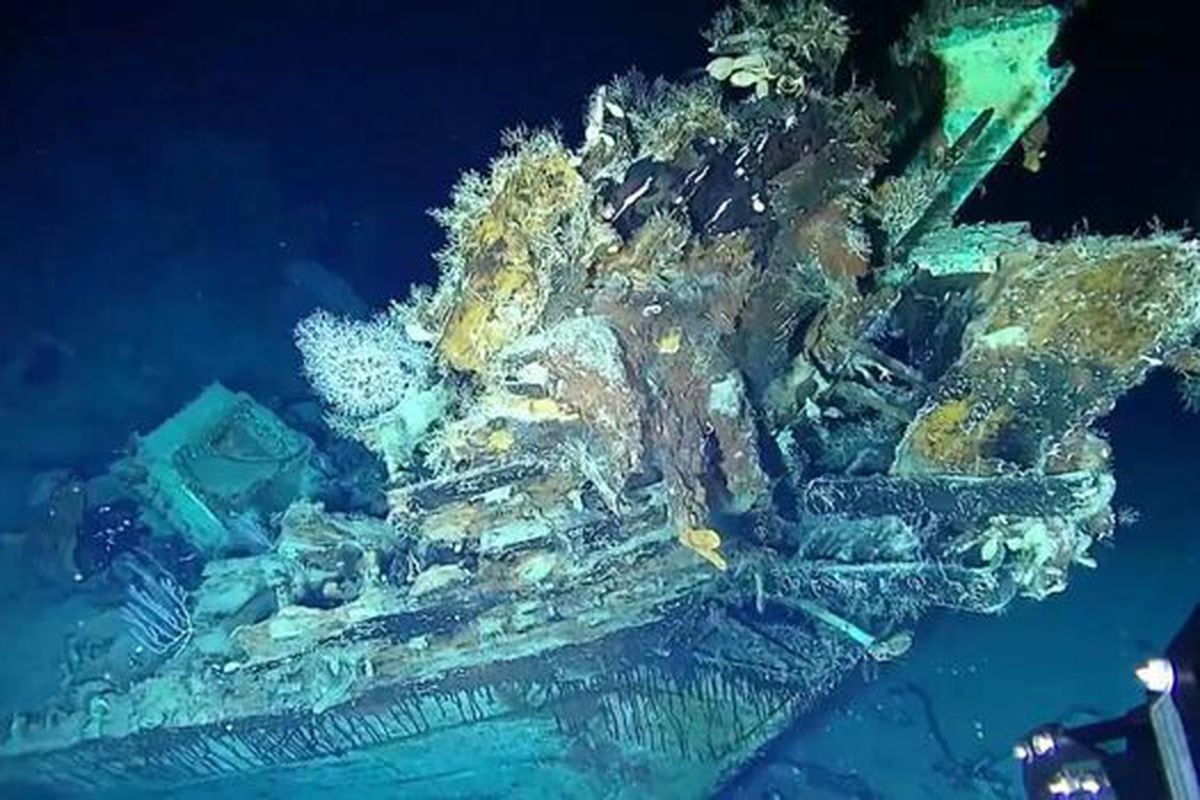In February, the Government of Colombia will begin the exploration of the galleon
San José
,
the Spanish crown ship sunk by English privateers off the coast of Cartagena de Indias in 1708. The objective of this new phase is to know how the area is in the that the ship has remained for three centuries and, most importantly, identify with the greatest possible certainty what objects there are, what state they are in and which ones can be brought to the surface to carry out scientific tests without altering the ecosystems that have been born around the boat.
Adriana Molano, vice minister of regional development and heritage of the Ministry of Culture, explains that after a year of analysis and studies on what to do with the galleon, President Gustavo Petro decided to prioritize scientific research over the extraction of gold and coins.
“What begins now is an exploratory work that seeks to dismantle all the myths created around San José,” says Molano in conversation with EL PAÍS.
“They have said that what is inside the galleon could even help us pay the external debt, but nothing like that.
"We are going to recover and protect the archaeological heritage, not to search for treasure."
Molano also announces that the Colombian Navy, in alliance with the General Maritime Directorate and the Institute of Anthropology and History, will be in charge of carrying out the scientific and archaeological process involved in the exploration of the galleon.
“A foreign company will no longer be responsible for the investigation, as had been proposed in previous governments.
We will do it jointly between the Ministry of Culture and the Ministry of Defense.”
The Colombian State, says Molano, is prepared to carry out the exploration.
“We are working with the best experts in deep-sea archaeology.
“We have the Caribe ship, designed for these great scientific expeditions, the high-tech laboratories and, above all, an underwater robot that will be in charge of recovering the archaeological pieces.”
This device, which can descend to 600 meters deep where the galleon is buried, cost the State more than 2 million dollars and has already been used in two previous dives to take photographs of what is on the ship.
In the latest images, released in June 2022, you can see almost intact Chinese tableware, a couple of gold ingots, hundreds of eight-real coins, several cannons made in Seville in 1665, swords, vessels, suitcases and many other small treasures of the time, unknown until then.
Mónica Orduña, expert in submerged archaeological heritage from the Ministry of Culture, explains that the difference between those two previous dives and those that will be carried out this year is that now, for the first time, it is planned to recover archaeological evidence.
The robot, remotely controlled from the ship by scientists who see everything in real time through a system of screens, has the task of removing some pieces and bringing them to the surface.
“This process will show us the necessary protocols and tools for handling materials,” says Orduña in dialogue with EL PAÍS.
In addition to the cameras, the small specialized robot has an arm that imitates the human hand to pick up, clean and extract with extreme care the objects that the scientists decide.
The expert states that when moving an object that has been buried 600 meters deep for more than 300 years, its material can deteriorate and even decompose.
“It changes the temperature, the amount of salt, it will have contact with air and sunlight.
"We don't know how he's going to react."
The concern of scientists is that when a necklace, a gold coin, a vessel, a jar or a simple fork is brought to the surface, it will fall apart.
“Like when you put a piece of cookie in water.
If you leave it for a while, it still looks the same, but when you touch it it falls apart.
That can happen with the objects of
San José
,” Orduña explains in a didactic way.
Vice Minister Molano complements her: “At the end of this exploratory phase we may decide that it is best not to take anything out because it will be damaged when it reaches the surface.
This is what we want to verify with this exploratory phase.”
Molano insists that the purpose of the exploration is scientific and not economic.
“What archeology suggests is that the objects that are there have to tell us a piece of history that we do not know.
If we recover them we will be able to understand what the galleons were like, who their crew members were, and what objects were used.
The treasure we have is archeology, not coins.”
Orduña believes that this heritage is a good communication tool to confirm or deny hypotheses about what daily life was like in certain periods of time during the colony.
“This will allow us to reconstruct a process of national identity,” he says.
Vice Minister Molano proposes making a series, a podcast or a documentary about the exploration process and she dreams of one day making a large museum in Cartagena with all the objects that can be recovered from the
San José
galleon .
“The archaeological heritage is protected and intervened so that we know the history of what happened, we want to tell that to the public,” she says.
And she ends with an invitation: “I hope this museum is done jointly with the Government of Spain.”
Subscribe here
to the EL PAÍS newsletter about Colombia and
here to the WhatsApp channel
, and receive all the key information on current events in the country.

